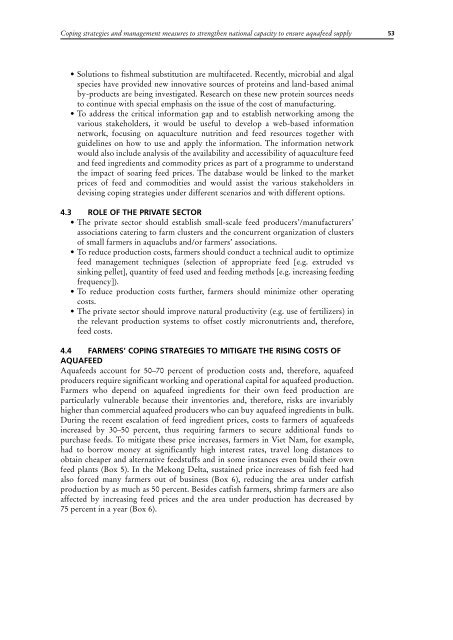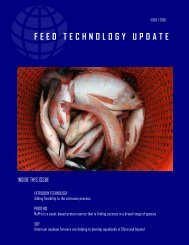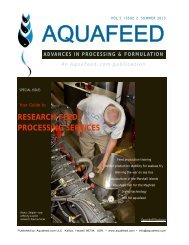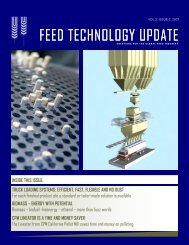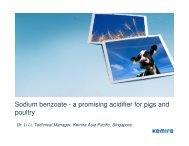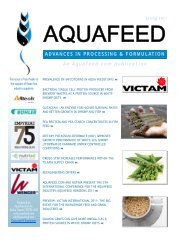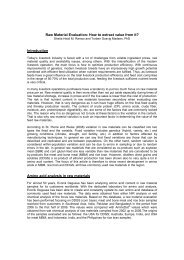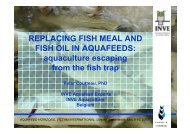Read Document - AquaFeed.com
Read Document - AquaFeed.com
Read Document - AquaFeed.com
Create successful ePaper yourself
Turn your PDF publications into a flip-book with our unique Google optimized e-Paper software.
Coping strategies and management measures to strengthen national capacity to ensure aquafeed supply53• Solutions to fishmeal substitution are multifaceted. Recently, microbial and algalspecies have provided new innovative sources of proteins and land-based animalby-products are being investigated. Research on these new protein sources needsto continue with special emphasis on the issue of the cost of manufacturing.• To address the critical information gap and to establish networking among thevarious stakeholders, it would be useful to develop a web-based informationnetwork, focusing on aquaculture nutrition and feed resources together withguidelines on how to use and apply the information. The information networkwould also include analysis of the availability and accessibility of aquaculture feedand feed ingredients and <strong>com</strong>modity prices as part of a programme to understandthe impact of soaring feed prices. The database would be linked to the marketprices of feed and <strong>com</strong>modities and would assist the various stakeholders indevising coping strategies under different scenarios and with different options.4.3 Role of THE private sector• The private sector should establish small-scale feed producers’/manufacturers’associations catering to farm clusters and the concurrent organization of clustersof small farmers in aquaclubs and/or farmers’ associations.• To reduce production costs, farmers should conduct a technical audit to optimizefeed management techniques (selection of appropriate feed [e.g. extruded vssinking pellet], quantity of feed used and feeding methods [e.g. increasing feedingfrequency]).• To reduce production costs further, farmers should minimize other operatingcosts.• The private sector should improve natural productivity (e.g. use of fertilizers) inthe relevant production systems to offset costly micronutrients and, therefore,feed costs.4.4 Farmers’ coping strategies to mitigate the rising costs ofaquafeedAquafeeds account for 50–70 percent of production costs and, therefore, aquafeedproducers require significant working and operational capital for aquafeed production.Farmers who depend on aquafeed ingredients for their own feed production areparticularly vulnerable because their inventories and, therefore, risks are invariablyhigher than <strong>com</strong>mercial aquafeed producers who can buy aquafeed ingredients in bulk.During the recent escalation of feed ingredient prices, costs to farmers of aquafeedsincreased by 30–50 percent, thus requiring farmers to secure additional funds topurchase feeds. To mitigate these price increases, farmers in Viet Nam, for example,had to borrow money at significantly high interest rates, travel long distances toobtain cheaper and alternative feedstuffs and in some instances even build their ownfeed plants (Box 5). In the Mekong Delta, sustained price increases of fish feed hadalso forced many farmers out of business (Box 6), reducing the area under catfishproduction by as much as 50 percent. Besides catfish farmers, shrimp farmers are alsoaffected by increasing feed prices and the area under production has decreased by75 percent in a year (Box 6).


